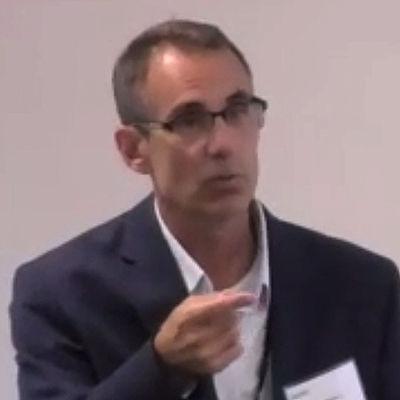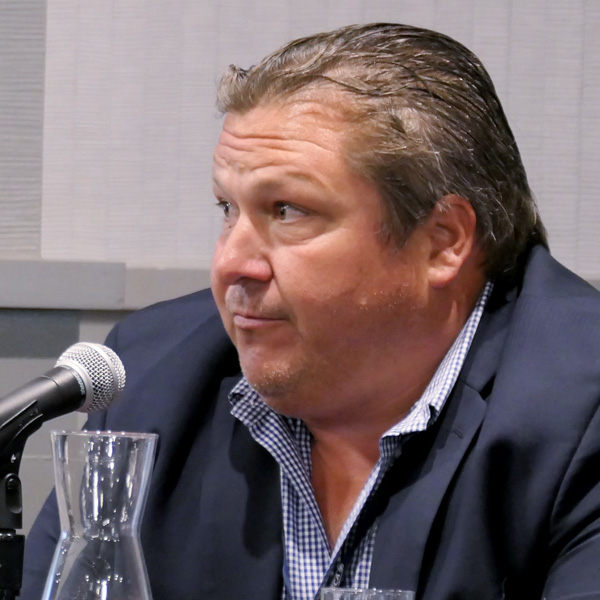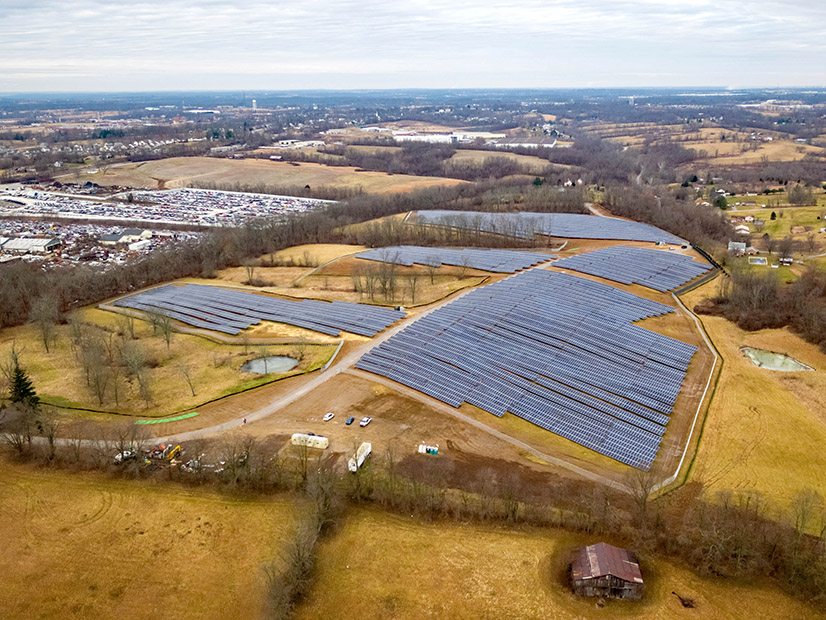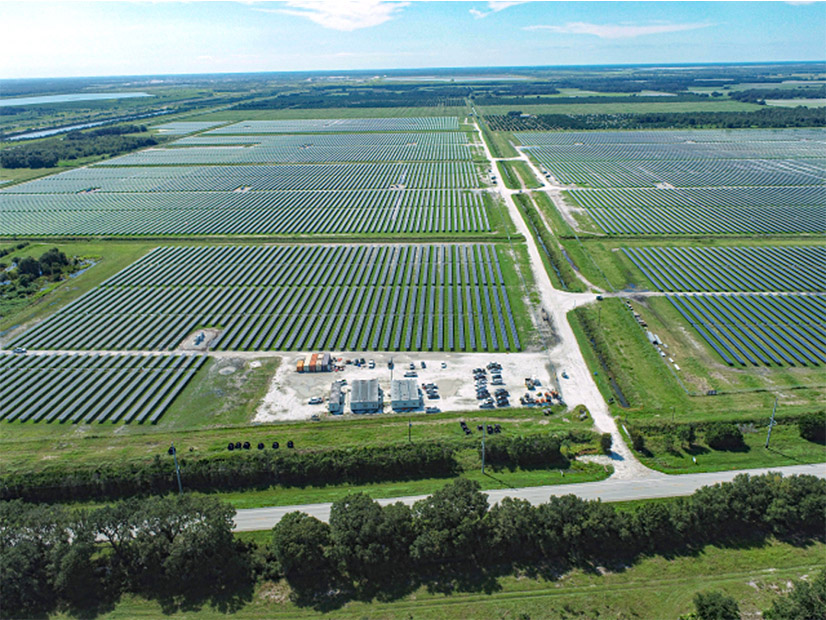TEMPE, Ariz. — The Western Markets Exploratory Group made a rare public presentation of its work assessing the pros and cons of organized markets in the West, including an RTO, at the Sept. 29 meeting of the Committee on Regional Electric Power Cooperation and the Western Interconnection Regional Advisory Body (CREPC-WIRAB).
The group’s members include a loose coalition of some of the West’s largest utilities, but its work has taken place largely in private since it began meeting in summer 2021.
Arizona Corporation Commission Chair Lea Marquez Peterson introduced and moderated the WMEG panel, consisting of Arizona Public Service (NYSE:PNW) CEO Jeff Guldner, NV Energy (NYSE:BRK.A) CEO Doug Cannon and Bonneville Power Administration CEO John Hairston.
“There are many options for pursuing greater collaboration among utilities in the West” to promote reliability and economic benefits, Marquez Peterson said. “One option that’s been highly discussed is the creation of an RTO. I believe the regulators in this room would like to see an RTO, and certainly a great number of stakeholders would like to see that also.”
Questions remain, however, about whether an RTO “will really provide more benefits than less expensive options,” she said. In the meantime, “we should continue to investigate all opportunities for furthering collaboration between utilities and for strengthening our relationships with regulators in other states, like the approach with the Western Markets Exploratory Group.”
WMEG is weighing options that include: CAISO’s proposed extended day-ahead market (EDAM) for its real-time Western Energy Imbalance Market (WEIM); the potential for CAISO to expand beyond California and become an RTO; SPP’s Markets+ program, a bundle of services that stops short of a full RTO; SPP’s plans for an RTO West, an offshoot of its Eastern Interconnection RTO; and the Western Power Pool’s Western Resource Adequacy Program (WRAP), a West-wide effort to ensure utilities have sufficient capacity to meet peak demand. (See CREPC-WIRAB Weighs Western Transmission, Markets.)
Guldner said WMEG members are interested in greater market efficiencies such as through CAISO’s EDAM. Large Colorado and Nevada utilities are under legislative mandates to join an RTO by 2030, he noted. And WMEG has talked with CAISO about the possibility of an RTO, but CAISO’s one-state governance remains a sticking point, he said.
“We began talking with the California Independent System Operator about … if we go to one large market, then we really need to address governance, because everybody was concerned about a California-dominated governance in a West-wide market,” Guldner said.
“There are other options, and I just want to make one point really clear. None of the options would involve the rest of the West not trading with California,” he said. “The question is just how that trading will occur. California has a massive load sink [that’s vital] for our generation to be optimized. It’s just whether that would be done directly as part of the California market or whether it would be done through seams agreements between two RTOs.”
SPP’s planned RTO West is another possibility, Guldner said.
WMEG was established to develop a “roadmap” for the West “up to and including a full RTO formation,” with cost-benefit analyses for various options, he said. It now involves 25 entities, including Idaho Power, the Los Angeles Department of Water and Power, Public Service Company of New Mexico and the Western Area Power Administration. (See Western Utilities to Explore Market Options.)
BPA Viewpoint
BPA joined WMEG this year to get a broader understanding of “what’s happening in [Western] markets,” Hairston said. “We come to this discussion with about three-quarters of the high-voltage transmission in the Northwest, so quite honestly, any discussion about an RTO [or other organized markets in the West] has to involve Bonneville Power.
“We understand that, and we accept that responsibility,” he said. “The thing is that when I come to these conversations, I’m bringing 140 some-odd customers with me, and so if you can imagine trying to pull all those different perspectives together and get us on one path, that’s also challenging.”
BPA began participating in the WEIM earlier this year and is seeing positive results from its first foray into an organized market, he said.
Now it is paying close attention to what’s happening with the WRAP as it gets closer to starting operations, Hairston said. The program has signed up 26 participants, representing much of the Western Interconnection, notably absent CAISO. (See Western Power Pool Board Approves WRAP Tariff.)
“The next step for us really is looking at how we develop a resource adequacy program for the West,” Hairston said. “And I think what’s happening in the Western Power Pool [with WRAP] is exactly what we need. We’re seeing the development of an independent governance structure, which I think could be the template for any other types of governance structures that we need as we entertain other markets. So, I’m really encouraged about what I’m seeing.
“Where else have you seen all of these utilities across the Northwest come together in this transparent nature to set up a program that’s going to benefit all of us?” he said. “I think that in itself is an important step. I’m really glad to see that collaboration, and I think it is going to yield some positive results.”
BPA next will join a day-ahead market, whether it is CAISO’s EDAM or SPP’s Markets+, and that could determine its eventual RTO membership, he said.
“Once you get into that extended day-ahead and you make those additional investments and that structure is developed, it’s going to be really challenging to move after that,” Hairston said. “And so, we have to get this next step right because that next step, I think, is really the foundational piece for an RTO.”
“I think at the end of this thing there will be a Western RTO, [but] how [that looks] still remains to be seen,” he said. “Is it one? Is it two? Those things have to be worked out, and that’s going to have a lot to do with the qualitative piece: governance structures; how comfortable entities are in the development, whether it’s through CAISO or SPP. You have to be comfortable with the governance structure you have and how you participate.”
The other piece is quantitative, he said.
“There’s a lot of discussion about the efficiencies gained under one Western RTO as opposed to maybe having several different [organized markets], but from my perspective, we really have to think about what is gained through some incremental efficiencies if the governance structure isn’t what you want,” Hairston said.
“So those are the types of questions we’re trying to tackle, and I think WMEG allows us to work with a number of important utilities, understanding their perspective on the issues and making sure that we’re factoring in all of the considerations as we make decisions and work transparently with our customers in making that decision,” he said.
NV Energy Comments
Nevada’s largest utility, NV Energy, was an early participant in the Western Energy Imbalance Market and has had a positive experience, CEO Cannon said.
The market has produced more than $2 billion in benefits for its participants since it started in 2014.
“Now, as we step forward into what’s next in the state of Nevada … our thinking on market development [is motivated by] … what option we believe is going to be best for Nevada,” Cannon said.
The state has plenty of solar power, like its neighbor California, as well as similar summer peaks, he said. Partnering with California won’t be enough to deliver the diversity of resources — including hydropower from the Pacific Northwest and wind from Wyoming and Idaho — that Nevada needs to decarbonize its energy supply by 2050, as state law requires, he said.
Keeping ratepayer costs down while building infrastructure is another important consideration and will require market efficiencies to drive down energy prices, he said — a point also made by APS’ Guldner. And NV Energy is working under a state mandate to join an RTO by 2030, he said. All are factors the company has to consider when deciding what markets to be part of going forward, he said.
“That’s really what prompted us to look at an organization like WMEG,” Cannon said. “Now we’re up to 25 participants. We have 95 GW of peak load represented in that organization. We have geographic diversity. We have resource diversity. We have time diversity, so it starts to check a lot of those boxes that I talked about before,” he said. “And so, I think it is a very useful organization to help us do some assessment … to understand what is ultimately the best outcome for investors.”




